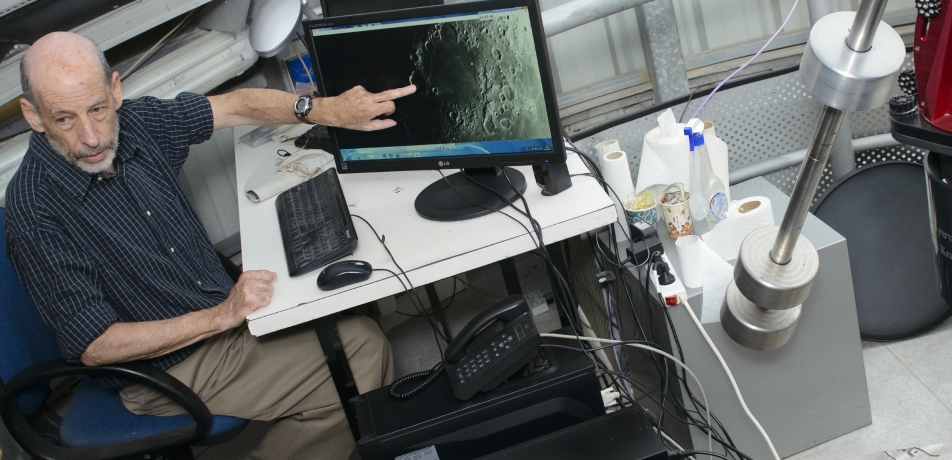Rock star of astronomy education
Ilan Manulis, director of Weizmann’s landmark observatory
Briefs

When astronomers discover new asteroids, they earn the right to name them for people they admire. Bestowed on just a few Israelis, this celestial citation has gone to high-flying celebrities, among them Ilan Ramon—the first Israeli astronaut who lost his life in the Columbia shuttle explosion—and bestselling author Ephraim Kishon. But the very first “sabra-associated” asteroid was named after a relatively low-profile investigator on the Weizmann Institute campus: the Director of the Martin S. Kraar observatory, a passionate astrophysics educator by the name of Ilan Manulis.
Mr. Manulis learned about the space rock that came to bear his name while standing atop one of the most meaningful “rocks” in Israel: Masada.
“I had arranged a nighttime tour for an American astronomer who, with his colleagues, had discovered many asteroids and comets,” he recalls. “There, in Masada’s ancient synagogue, he presented me with a certificate showing his team had named asteroid #13615 after me. It was absolutely overwhelming.”
Fascination with Near Earth Objects, or NEOs, is what inspired Manulis, then an amateur astronomer, to personally identify four new asteroids, and to improve scientists’ understanding of the orbit of over 50 others. While working full-time as a software engineer, Manulis also contributed to star-gazing technology, pioneering the robotic systems that allow telescopes—like the one at the Kraar Observatory—to scan the heavens independently, while human astronomers sleep snug in their beds. Not that Manulis was ever one for sleeping.
“Every day I came home from work, then, starting around 11 PM, used software tools to identify NEOs capable of crashing into Earth and causing mass extinctions,” he says. “My goal was to identify big asteroids in time, contributing my small part to preventing humankind from going the way of the dinosaurs.”
Manulis’ professional training paved his way to the Weizmann Institute, transforming astronomy from a hobby into a career. As a developer of real-time software, he had the right skill set to create a robotic observatory capable of tracking and identifying objects in the night sky. So, when he was invited to join Israel’s first-ever national advisory committee on the NEOs threat, that is just what he proposed. Proposal accepted, Manulis proceeded to design and construct two such observatories, among the first of their kind in Israel.
In 2006, astronomy became a full-time gig when Manulis was named the director of a private observatory dedicated to science education “I later learned that, of eight candidates I was the only one without a PhD in astronomy,” he says. “My excitement about science education won me the job.” Three years later, Zvi Paltiel, then the head of the Davidson Institute of Science Education, invited Manulis to design an observatory, to be built on top of the service tower of the Koffler Accelerator—the icon of the Institute and of Israeli science—in the center of the Weizmann Institute campus.
The Weizmann observatory was conceived as an international collaboration in astronomy education. High school students in Los Angeles would activate the observatory’s robotic capabilities remotely, and study Israel’s night sky during California school hours. A similar setup in LA would allow Israeli students to observe the sky over the American west coast. Although for logistical reasons, this collaboration never materialized, Manulis joined the Institute, went ahead and built the observatory, which is now used for basic science research, for training Weizmann graduate students in the use of telescopic technology, as and for tutoring talented high school students preparing advanced science projects in the field of astrophysics.
Calling himself a “science preacher”, Manulis presents popular astronomy lectures all over Israel, attracting a wide range of audiences with his starry-eyed love for his subject matter. “When I was young, I never dared dream I’d work at the Weizmann Institute,” he says. “Now that I’m here, it doesn’t feel like work at all.”